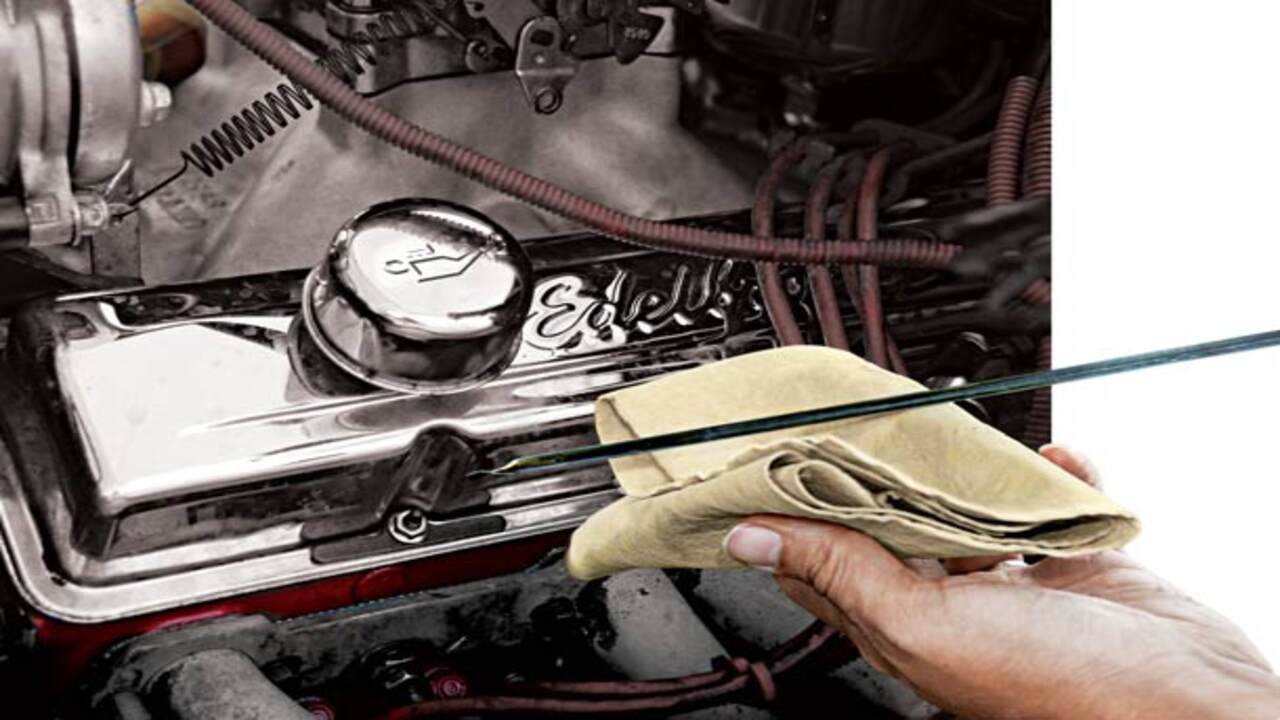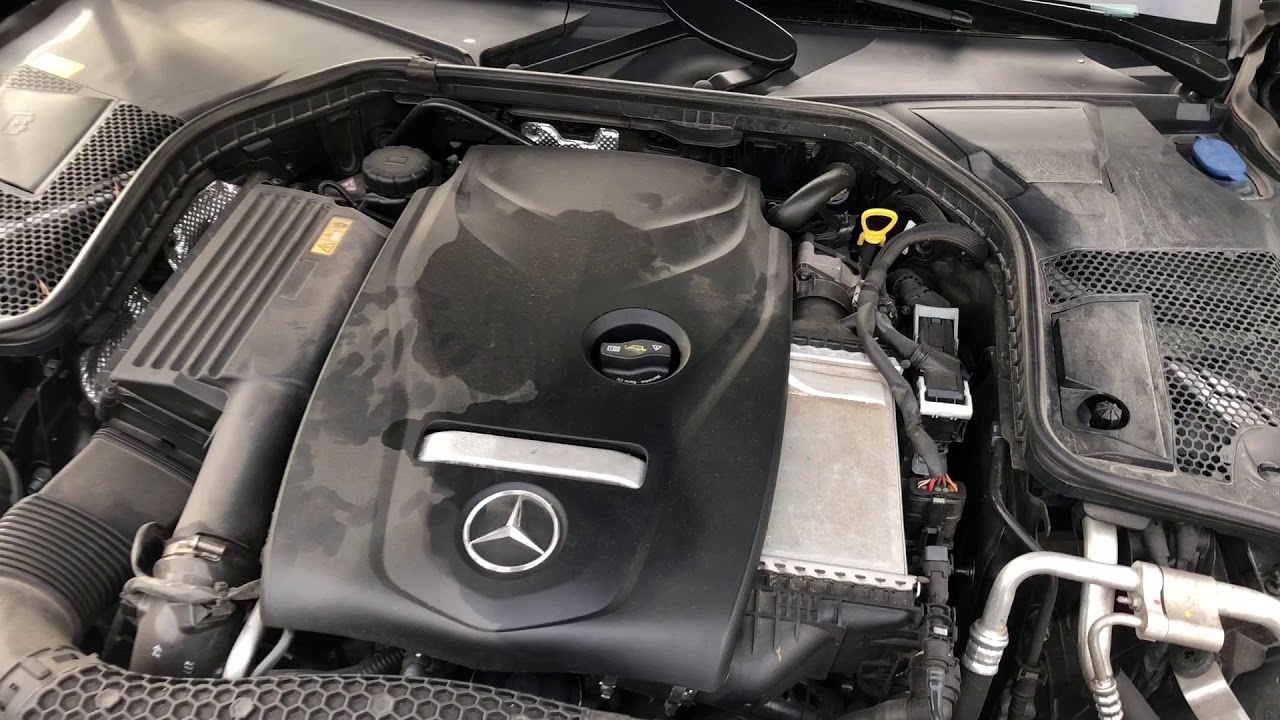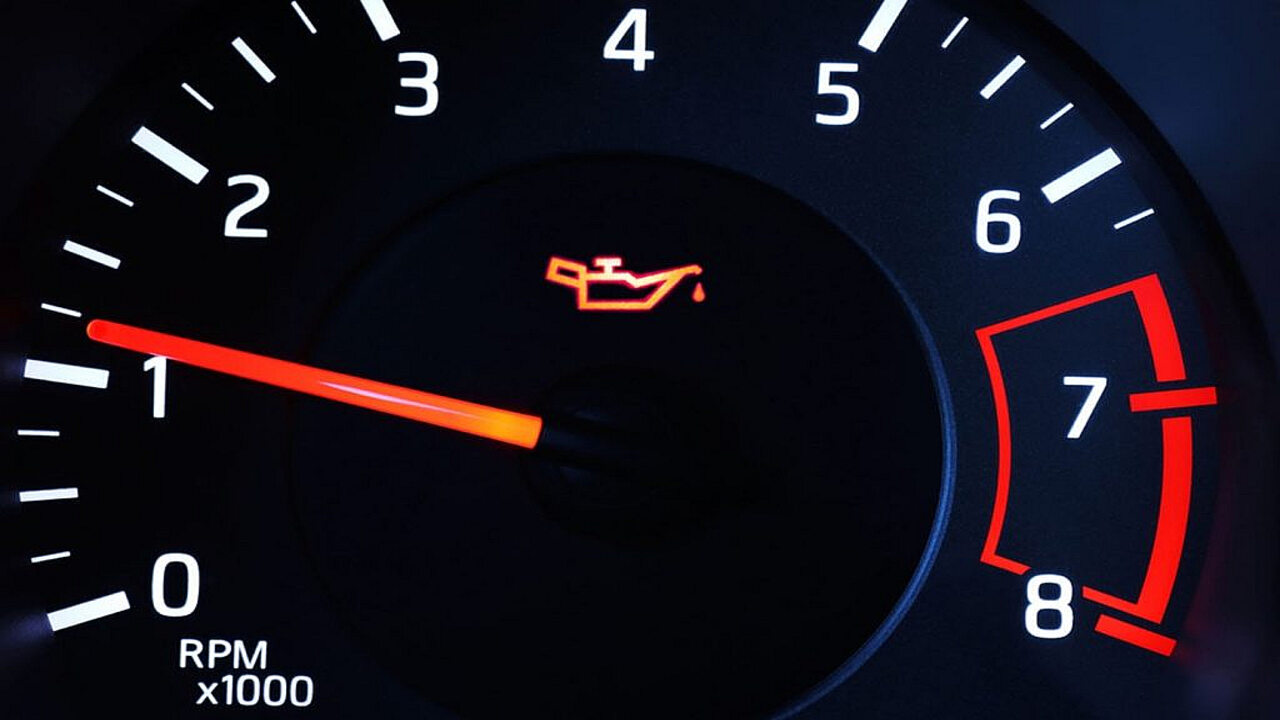As the automotive industry continues to embrace advancements in technology and efficiency, diesel engines have become a popular choice for many drivers.
Mercedes-Benz, a leading luxury car manufacturer, has joined this trend with its GLK-Class Diesel model. This vehicle offers a powerful and fuel-efficient diesel engine, providing a smooth and reliable driving experience. However, like any engine, the diesel engine in the Mercedes-Benz GLK-Class requires regular maintenance and upkeep to ensure optimal performance.
Here, we will discuss the importance of regularly checking the engine oil level in your Mercedes-Benz GLK-Class Diesel and provide a step-by-step guide on how to do so. Following these simple steps on the Mercedes-Benz GLK-Class diesel check engine oil level ensures your engine is well-lubricated and running smoothly, avoiding potentially costly repairs.

The Importance Of Checking Engine Oil Level
The importance of checking engine oil levels cannot be overstated by maintaining your vehicle’s health and performance. Engine oil is a lubricant for the various moving parts within the engine, reducing friction and preventing excessive wear and tear.
Regularly checking the engine oil level is essential because it allows you to ensure that there is enough oil to lubricate the engine properly. Insufficient oil can lead to increased friction, which can cause overheating and damage to the engine components.
Additionally, checking the engine oil level can help identify potential issues with the engine. If the oil level is consistently low, it may indicate a leak or consumption problem that needs to be addressed. Conversely, if the oil level is excessively high, it could indicate coolant contamination or another underlying problem.
Tools And Equipment Needed For Checking Engine Oil Level

Mercedes-Benz has long been recognized as a leading manufacturer of luxury automobiles, renowned for their superior engineering and innovative design. As part of their commitment to ensuring optimal performance, Mercedes-Benz emphasizes the importance of regularly monitoring and maintaining the engine oil level in their vehicles. To check the engine oil level, you will need the following tools and equipment:
- Clean rag or paper towel
- Funnel
- Gloves
- Safety glasses
- Engine oil
- Dipstick
- Owner’s manual
It’s important to regularly check and maintain the proper oil level in your engine to ensure its smooth operation and longevity.
Step-By-Step Guide To Mercedes-Benz GLK-Class Diesel Check Engine Oil Level

Maintaining a Mercedes-Benz vehicle’s optimal performance and longevity, one crucial aspect that cannot be overlooked is regularly checking the engine oil level. Engine oil serves as the lifeblood of any automobile, ensuring proper lubrication and cooling of the engine components. Therefore, staying vigilant and conducting routine checks of the engine oil level is of paramount importance.
Mercedes-Benz, renowned for its commitment to precision engineering and innovation, emphasizes the significance of monitoring the engine oil level. By doing so, owners can proactively address potential issues, such as oil leaks or excessive oil consumption, which could adversely affect the vehicle’s performance and longevity. Hee are steps on Mercedes-Benz GLK-Class diesel check engine oil level:
1.Preparing The Vehicle

Following a few key steps is important when preparing the Mercedes-Benz GLK-Class Diesel to check the engine oil level. Firstly, make sure to park the vehicle on a level surface to obtain accurate readings. This will help to prevent any potential discrepancies in the oil level measurements.
Additionally, make sure to turn off the engine for at least five minutes before checking the oil level. This allows the oil to settle and ensures an accurate reading. Finally, locate the dipstick, usually marked with a bright-coloured handle, for easy identification.
The dipstick is typically situated near the engine and can be found by referring to the vehicle’s owner’s manual. Once these preparatory steps have been taken, you can check the oil level of your Mercedes-Benz GLK-Class Diesel confidently and accurately.
2.Locating The Engine Oil Dipstick

Checking the engine oil level in a Mercedes-Benz GLK-Class Diesel, there are a few steps you need to follow. Step 2 entails locating the engine oil dipstick. The dipstick is typically located towards the front of the engine, near the oil filler cap. They usually label it with a bright-coloured handle for easy identification. To find the dipstick, open the hood of your GLK-Class and secure it in place.
Then, locate the engine oil filler cap, which is often located on the top of the engine. Once you have located the filler cap, look for the dipstick nearby. It is important to note that the exact location may vary slightly depending on the year and model of your GLK-Class. However, it is typically near the filler cap. Once you have located the dipstick, you can proceed to the next step in checking the engine oil level.
3.Removing And Cleaning The Dipstick
Checking the engine oil level in a Mercedes-Benz GLK-Class Diesel involves a few steps. The third step is to remove and clean the dipstick. Once you have located the dipstick, usually found near the engine, gently pull it out. Make sure to have a clean rag or tissue paper nearby to wipe off any excess oil or dirt from the dipstick.
Cleaning the dipstick is crucial to obtain an accurate oil level reading. Carefully wipe the dipstick clean, ensuring that no residue remains. This step is important to ensure an accurate measurement of the oil level in the engine. Once the dipstick is clean, you can proceed to the next step of checking the engine oil level.
4.Reinserting And Removing The Dipstick To Check Oil Level

Once you have located the dipstick, carefully insert it back into the oil reservoir, and seat it fully. Then, gently remove the dipstick again, taking note of the oil markings on it. These markings will indicate the current oil level in the engine. Pay attention to the minimum and maximum marks to ensure the oil level falls within the recommended range.
If the oil level is below the minimum mark, adding more oil should be added per the manufacturer’s instructions. Conversely, if the oil level exceeds the maximum mark, it must drain some oil to bring it back within the appropriate range. Regularly checking and maintaining the engine oil level is vital to ensure optimal performance and longevity of your Mercedes-Benz GLK-Class Diesel.
5.Interpreting The Oil Level Reading
Ensure the vehicle is parked on a level surface and the engine is turned off. Locate the oil level dipstick, usually located near the engine. Carefully pull out the dipstick and wipe it clean with a cloth or paper towel. Insert the dipstick back into the tube, then pull it out again.
Now, take note of the oil level markings on the dipstick. There are usually two indicators – a minimum and maximum level. The oil level should ideally be between these two marks.
If the oil level is below the minimum mark, it indicates that the engine oil is too low and needs to be topped up. On the other hand, if the oil level is above the maximum mark, it suggests that there is an overfill and some oil needs to be drained out.
Common Signs Of Low Engine Oil Level

Interpreting the oil level reading in the Mercedes-Benz GLK-Class Diesel involves simple steps. First, you ensure that you park the vehicle on a level surface and turn off the engine. Locate the oil level dipstick, usually located near the engine. Carefully pull out the dipstick and wipe it clean with a cloth or paper towel.
Insert the dipstick back into the tube, then pull it out again. Now, take note of the oil level markings on the dipstick. There are usually two indicators – a minimum and maximum level.
The oil level should ideally be between these two marks. If the oil level is below the minimum mark, it indicates that you need to top up the engine oil because it is too low. On the other hand, if the oil level is above the maximum mark, it suggests an overfill and some oil needs to be drained out. Here are the common signs of low oil levels,
- Dashboard warning light illuminates
- Engine runs rough or makes unusual noises
- Decreased performance or power loss
- Overheating of the engine
- Increased fuel consumption
- Visible oil leaks under the vehicle
- Burning smell coming from the engine
- Oil pressure gauge shows low reading
- Difficulty starting the engine
Importance Of Regular Oil Level Checks For Diesel Engines

Regular oil level checks are of utmost importance for diesel engines. Diesel engines require proper lubrication to function efficiently, and maintaining the correct oil level is crucial for this purpose. Regularly checking the oil level ensures that there is enough lubrication to reduce friction and heat generated by the engine’s moving parts.
These parts can wear out quickly without sufficient oil, leading to costly repairs and potential engine failure. Moreover, diesel engines often operate under harsh conditions, such as high temperatures and heavy loads.
These conditions can cause the oil to degrade faster, reducing lubrication properties. Regularly checking the oil level can identify any signs of oil degradation and take appropriate action, such as changing the oil or adding additives to enhance its performance.
Recommended Oil Change Intervals For The GLK-Class Diesel
In general, Mercedes-Benz recommends following the maintenance schedule outlined in your vehicle’s owner’s manual for the most accurate information regarding oil change intervals. However, as a guideline, conventional wisdom suggests changing the oil in a diesel engine every 7,500 to 10,000 miles or every 6 to 12 months, whichever comes first.
It’s worth mentioning that advancements in synthetic oils have extended oil change intervals for many modern vehicles, including diesel engines. Synthetic oils can typically last longer between changes, with some manufacturers suggesting intervals of up to 15,000 miles or more. However, following the specific recommendations outlined in your vehicle’s manual is still important.
Troubleshooting And Maintenance Tips For Maintaining Proper Oil Level

Engine oil plays a crucial role in lubricating the intricate moving parts within the engine, reducing friction, and dissipating heat. Over time, engine oil can become contaminated with dirt, debris, and other impurities, impairing its effectiveness.
By regularly checking the engine oil level, Mercedes-Benz owners can identify any potential abnormalities and take appropriate action to rectify them, thereby mitigating the risk of engine damage and ensuring optimal performance.
Here are Troubleshooting and Maintenance Tips for Maintaining Proper Oil Level:
- Regularly check oil level using the dipstick.
- Add the recommended oil type and amount if the level is low.
- Avoid overfilling oil to prevent engine damage.
- Monitor for oil leaks (stains or puddles).
- Have vehicle inspected for significant oil level drops or frequent leaks.
- Change engine oil and oil filter at recommended intervals.
- Use recommended oil viscosity for optimal performance.
- Monitor the oil pressure gauge or warning light on the dashboard.
- Regularly inspect and clean oil filler cap and oil filter housing.
- Follow the manufacturer’s guidelines for oil change intervals and maintenance.
Conclusion
Checking the engine oil level in a Mercedes-Benz GLK-Class diesel vehicle is crucial in maintaining its optimal performance. Not only does this ensure optimal performance and longevity of your vehicle, but it also serves as an important preventative measure for potential engine issues.
By following the simple steps on the Mercedes-Benz GLK-Class diesel check engine oil level, you can ensure that your car’s engine is always running smoothly and efficiently. Remember to check the oil level regularly and top it up as needed to avoid any potential issues with your engine. As a proud owner of a Mercedes-Benz, it is important to prioritize regular maintenance and care for your vehicle to prolong its longevity.
FAQs
1.How Do You Check The Oil On A Mercedes Glk 350?
Check the oil on a Mercedes GLK 350, park the vehicle on a level surface and turn off the engine. Open the hood and locate the oil dipstick, usually marked with a bright color.
2.How Do You Check The Oil Level On A Diesel?
To check the oil level on a diesel engine, start by ensuring the engine is turned off and parked on a level surface. Open the hood and locate the oil dipstick, usually labeled with a bright-colored handle.
3.How Do You Check The Oil Level On A Mercedes Dashboard?
To check the oil level on a Mercedes dashboard, start by turning on the ignition without starting the engine. Navigate to the “Vehicle” or “Settings” menu on the dashboard display, then select “Service” or “Maintenance.”
4.Will A Mercedes Tell You If Oil Is Low?
A Mercedes typically has an oil level monitoring system to alert the driver if the oil is low. The Mercedes-Benz GLK-Class Diesel is no exception to this, as it is equipped with a sophisticated check engine oil level feature.
5.How Will I Know If My Engine Oil Is Low?
Using the dipstick, you can check if your engine oil is low. Open your car’s hood and locate the dipstick, typically with a yellow or orange handle. Pull it out and wipe any oil with a cloth or paper towel.
6.Where Do You Check The Transmission Fluid Level On A 2013 Glk?
To check the transmission fluid level on a 2013 GLK, locate the transmission dipstick, usually near the back of the engine bay. Ensure the vehicle is on level ground, the engine is warm, and the transmission is in park or neutral. Pull out the dipstick, wipe it clean, reinsert it, and then check the fluid level against the markings on the dipstick.
7.Are There Any Warning Lights For Low Engine Oil Level In A Mercedes Benz GLK Class Diesel?
The Mercedes-Benz GLK-Class diesel may have a warning light for low engine oil level, typically indicated by the “Check Engine Light” or an oil can symbol on the instrument cluster. It’s important to address low oil level promptly to avoid engine damage.
8.How To Drain Excess Engine Oil From A Mercedes Benz GLK Class Diesel?
Locate the oil drain plug underneath the engine to drain excess engine oil from a Mercedes-Benz GLK-Class diesel. Ensure the engine is cool, place a drain pan beneath the plug, then carefully loosen and remove the plug to drain the excess oil. Be sure to use a suitable container for recycling or disposal of the oil.
9.How Does The Engine Oil Level Affect The Longevity Of A Mercedes Benz GLK Class Diesel?
Maintaining the correct engine oil level is crucial for the longevity of Mercedes-Benz GLK-Class diesel engines. Proper lubrication ensures components operate smoothly, reducing wear and tear. Insufficient oil can increase friction and potential engine damage, while excess oil can cause foaming and reduced lubrication efficiency.
10.How To Check The Engine Oil Level In A Mercedes Benz GLK Class Diesel?
To check the engine oil level in a Mercedes-Benz GLK-Class diesel, ensure the vehicle is parked on a level surface and the engine is turned off. Locate the dipstick, remove it, wipe it clean, reinsert it fully, then withdraw it to check the oil level. The level should fall between the minimum and maximum marks on the dipstick.
11.What Are The Risks Of Overfilling The Engine Oil In A Mercedes Benz GLK Class Diesel?
Overfilling the engine oil in a Mercedes-Benz GLK-Class diesel can lead to various risks, including increased pressure within the crankcase, which may result in oil leaks or damage to seals and gaskets.
Excess oil can also cause aeration or foaming, reducing the oil’s lubricating properties and potentially triggering the check engine light. Additionally, it can lead to premature wear on engine components and necessitate costly repairs.
12.Can You Check The Engine Oil Level In A Mercedes Benz GLK Class Diesel Myself?
Yes, you can check the engine oil level in a Mercedes-Benz GLK-Class diesel yourself. Follow the instructions outlined in the vehicle’s manual to locate and properly use the dipstick for checking the oil level. Ensure the vehicle is parked on a level surface and the engine is turned off for an accurate reading.
13.How To Prevent Overfilling The Engine Oil In A Mercedes Benz GLK Class Diesel?
To prevent overfilling the engine oil in a Mercedes-Benz GLK-Class diesel, always refer to the manufacturer’s recommended oil capacity and avoid adding more oil than necessary during oil changes. Use the dipstick to check the oil level periodically and adjust as needed to maintain it within the specified range.
14.Can You Swap A 2010 GLK 350 Engine In Your O6 350?
Swapping a 2010 GLK350 engine into a 2006 GLK350 may be technically feasible, but it’s a complex process that requires careful consideration of compatibility issues, including engine size, wiring harnesses, and electronic systems. It’s recommended to consult with a qualified mechanic or specialist to assess such a swap’s feasibility and potential challenges.
15.What Are The Signs Of Low Engine Oil Level In A Mercedes Benz GLK Class Diesel?
Signs of low engine oil level in a Mercedes-Benz GLK-Class diesel include illuminated warning lights on the dashboard, such as the oil pressure warning light or the check engine light.
Additionally, you may notice abnormal engine noises, increased exhaust emissions, or a decrease in overall engine performance. If you suspect a low oil level, check the oil level using the dipstick and add oil as needed to maintain proper lubrication.







